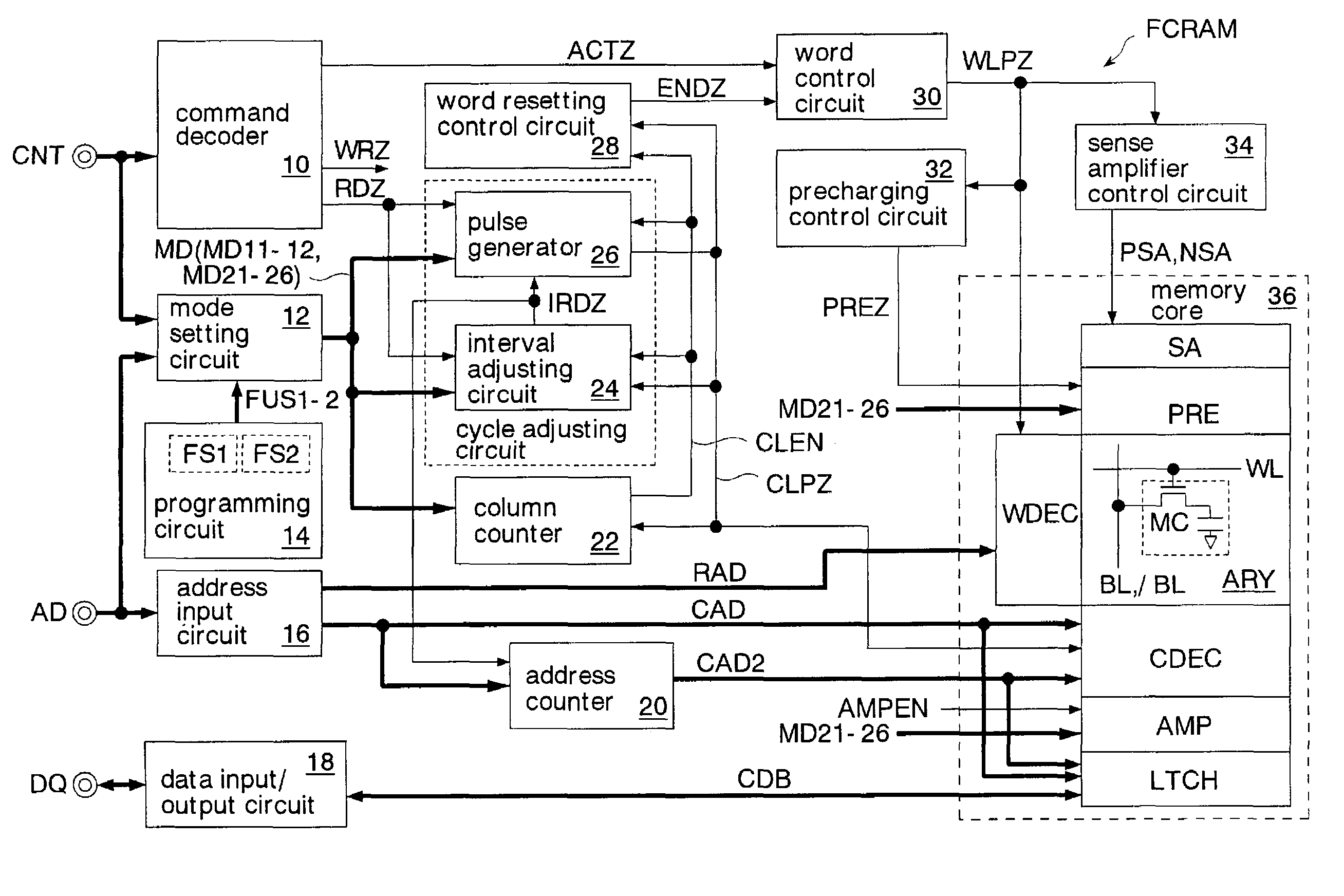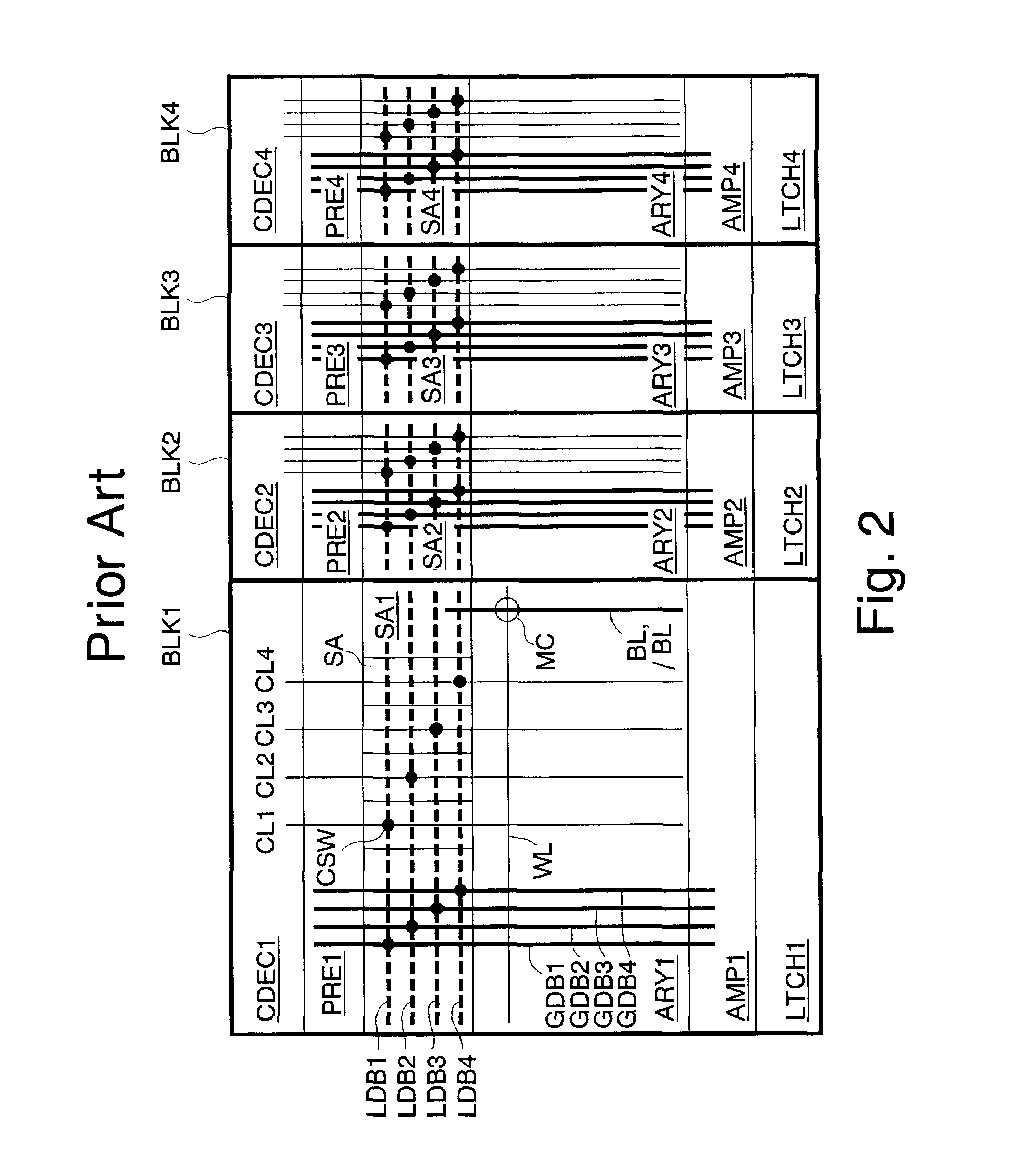Semiconductor memory having a pulse generator for generating column pulses
a technology of electromagnetic waves and memory blocks, applied in the field of electromagnetic waves, can solve the problems of high power consumption, high power consumption of read operations, and high power consumption of power supply, and achieve the effect of high speed page operation function, reduced operating power consumption, and high speed operation
- Summary
- Abstract
- Description
- Claims
- Application Information
AI Technical Summary
Benefits of technology
Problems solved by technology
Method used
Image
Examples
first embodiment
[0077]FIG. 3 shows the semiconductor memory of the present invention. In the diagram, each thick line represents a signal line that consists of a plurality of bits. The double circles shown to the left in the diagram represent external terminals. Signals ending in “Z” are of positive logic. Signals with a leading “ / ” are of negative logic.
[0078]This semiconductor memory is formed as an FCRAM (Fast Cycle RAM) on a silicon substrate by using CMOS processes.
[0079]The FCRAM has a command decoder 10, a mode setting circuit 12, a programming circuit 14, an address input circuit 16, a data input / output circuit 18, an address counter 20, a column counter 22, an interval adjusting circuit 24, a pulse generator 26, a word reset control circuit 28, a word control circuit 30, a precharging control circuit 32, a sense amplifier control circuit 34, and a memory core 36.
[0080]The command decoder 10 decodes a control signal CNT (command signal) which is supplied to a control terminal in order to op...
second embodiment
[0226]The programming circuit 14E has a first switch SW1, a second switch SW2, and a third switch SW3 which are made up of a conductive pattern formed on the semiconductor substrate in conformity to the pattern configuration of a photomask to be used in the semiconductor fabrication processes of the FCRAM. Since the functions of the first switch SW1 and the second switch SW2 are the same as in the second embodiment, description thereof will be omitted here.
[0227]The third switch SW3 outputs a pattern signal PAT3 (third internal setting signal) for indicating the operation mode of the FCRAM (low power mode or high speed mode). That is, the programming circuit 14E outputs the pattern signals PAT1, PAT2, and PAT3 according to the first, second, and third switches SW1, SW2, and SW3 which are set in accordance with the voltages of destinations of the conductive pattern.
[0228]The connection specifications of the first, second, and third switches SW1, SW2, and SW3, or the photomask to be u...
PUM
 Login to View More
Login to View More Abstract
Description
Claims
Application Information
 Login to View More
Login to View More - R&D
- Intellectual Property
- Life Sciences
- Materials
- Tech Scout
- Unparalleled Data Quality
- Higher Quality Content
- 60% Fewer Hallucinations
Browse by: Latest US Patents, China's latest patents, Technical Efficacy Thesaurus, Application Domain, Technology Topic, Popular Technical Reports.
© 2025 PatSnap. All rights reserved.Legal|Privacy policy|Modern Slavery Act Transparency Statement|Sitemap|About US| Contact US: help@patsnap.com



